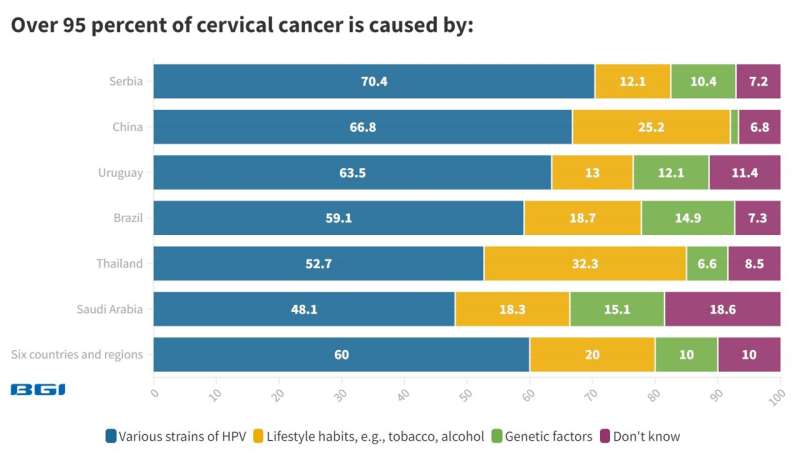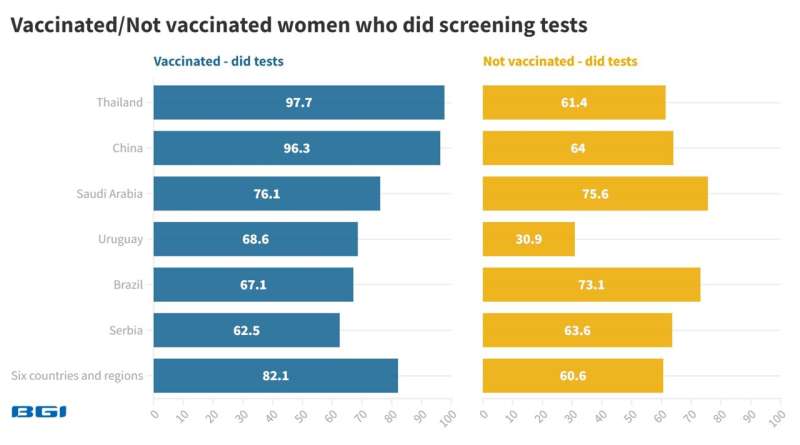This article has been reviewed according to Science X's editorial process and policies. Editors have highlighted the following attributes while ensuring the content's credibility:
fact-checked
proofread
Report shows young women have higher HPV vaccination rates but are put off by pap smears

To further motivate action to combat cervical cancer, BGI Genomics today released its State of Cervical Cancer Awareness Report. This report is released on World Self-Care Day, July 24, 2023, as the WHO notes that self-care—including cervical cancer screening—can be practiced "24 hours a day/7 days a week."
This report assesses the level of knowledge, attitudes, and practices related to cervical cancer screening and the human papillomavirus (HPV) vaccine. By examining these key areas, this survey seeks to highlight the associated barriers and opportunities. 1,878 female respondents from six countries and regions were surveyed: Brazil, the Chinese mainland, Saudi Arabia, Serbia, Thailand, and Uruguay.
Despite gaps in cervical cancer awareness such as 40.0% of women worldwide not knowing that cervical cancer is primarily caused by HPV, the report reveals several optimistic findings. For example, for women aged 21-25 years old, 46.0% of them received the HPV vaccine which is higher than the global average of 38.4%.
Other key takeaways from the report include:
HPV awareness affects cervical cancer screening rates: Among women who are unaware cervical cancer is often caused by HPV, 39.1% of them never undertaken cervical cancer screening which is higher than the global average of 31.2%.
More choice, fewer barriers: Age-specific HPV prevalence was highest in young women (<25 years) at 22%. Yet, 43.5% of women aged 21 to 25 years old—highest among the age groups surveyed—are deterred by meeting a male doctor performing a pap smear. Therefore, women, especially young women, should be offered HPV DNA tests in addition to pap smear tests.
Vaccination and screening form a virtuous cycle: For women who had the HPV vaccine, 82.1% had a cervical cancer screening, significantly higher than 60.6% of unvaccinated women. For women who had undergone screening, 45.8% received the HPV vaccine, which is higher relative to 22.1% of unscreened women. Informing women who missed national vaccination programs about where and when they could get vaccinated and screened is vital.

Cervical cancer is the fourth most common cancer among women globally, with an estimated 604,000 new cases and 342,000 deaths worldwide. Few diseases reflect global inequities as much as cancer of the cervix. Nearly 90% of the deaths in 2020 occurred in low- and middle-income countries.
"Early cervical cancer detection is vital to save lives and eventually eliminate this dreaded disease in line with the WHO's global strategy," said Zhang Lin, BGI Genomics Senior Product Manager. "This study shows increased awareness of women could be the missing link to boost vaccination and screening rates further."
More information: Report: www.bgi.com/global/news/bgi-ge … er-awareness-report?





















